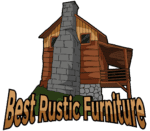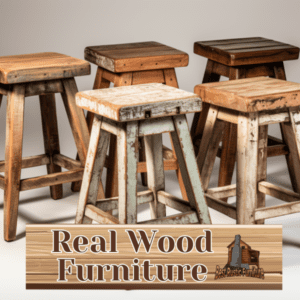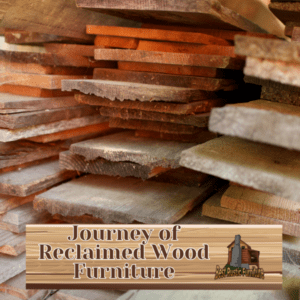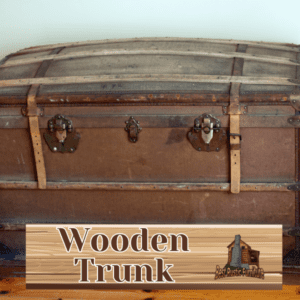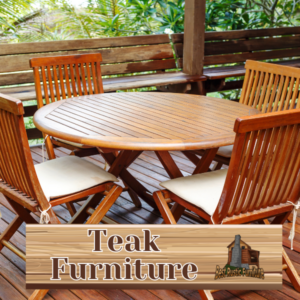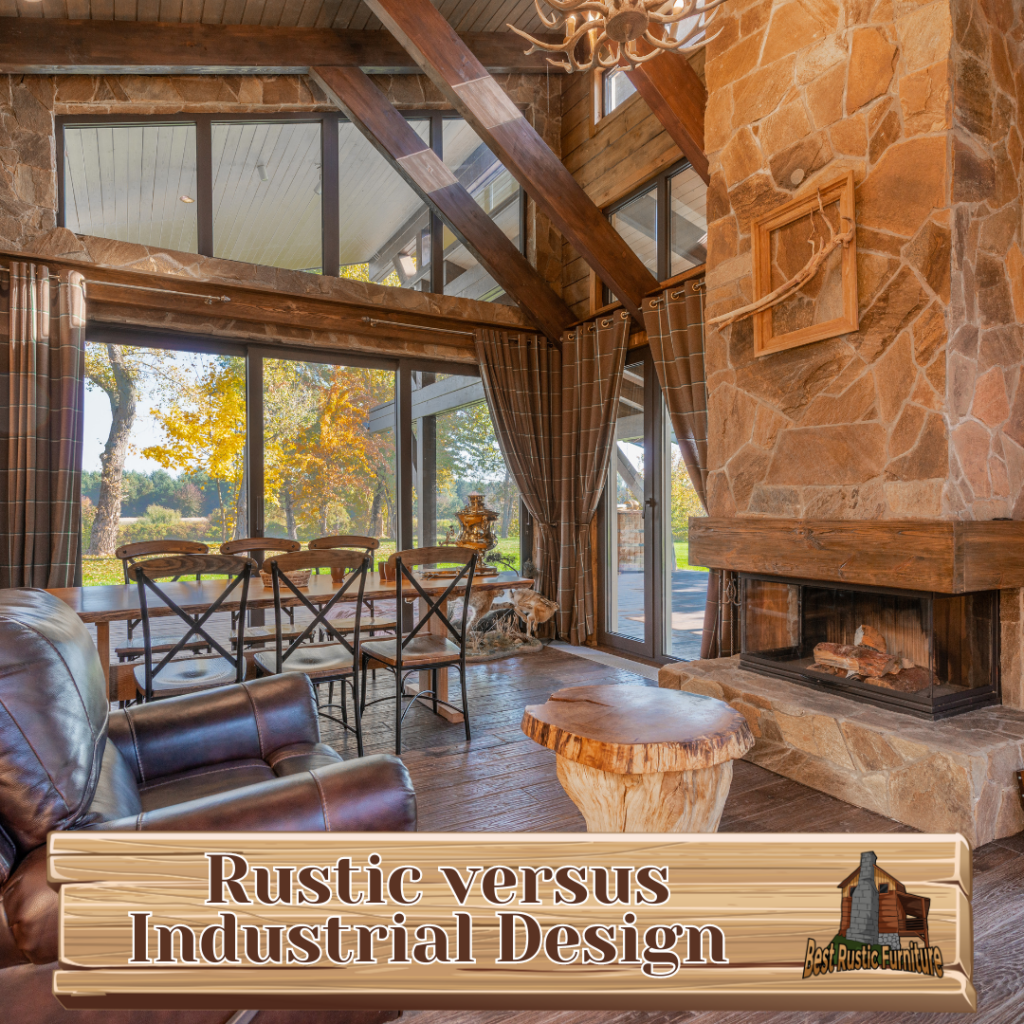
When it comes to interior design, two contrasting styles that have gained popularity over the years are Rustic and Industrial design. While both styles offer unique aesthetics, they showcase different characteristics and utilize distinct materials. Understanding the features and elements of each design can help you make an informed decision while choosing the style that best suits your preferences and space.
Rustic design embraces a warm and cozy ambiance, drawing inspiration from nature and the countryside. It showcases characteristics such as natural textures, organic materials, and a sense of age and history. On the other hand, Industrial design takes inspiration from factories and warehouses, embracing a raw and edgy aesthetic. It typically features exposed brick walls, utilitarian objects, and a mix of raw and reclaimed materials.
Both Rustic and Industrial design have their own distinct color palettes, furniture styles, and lighting choices. By comparing and contrasting these two design styles, you can gain a better understanding of their differences and find the perfect fit for your interior space. Considerations such as the overall ambiance, functionality, and personal preferences will help you make an informed decision. blending these styles or opting for hybrid designs has become a popular trend, allowing individuals to create unique and personalized spaces that reflect their distinct tastes.
Key takeaways:
- Rustic design emphasizes natural materials: Rustic design incorporates organic elements like wood, stone, and metal, creating a cozy and authentic atmosphere.
- Industrial design showcases raw and unfinished features: Industrial design emphasizes exposed brick, concrete, and metal elements, giving spaces a modern and urban feel.
- Selecting between rustic and industrial design depends on personal style and preferences: The choice between rustic and industrial design should be based on individual preferences, as both styles offer unique characteristics and can be adapted to suit different interior spaces.
What is Rustic Design?
In the world of design, there’s a fascinating contrast between rustic and industrial aesthetics. Today, let’s zoom in and explore the captivating realm of rustic design. We’ll uncover the unique characteristics that define rustic design, discover the materials that bring rustic spaces to life, and unravel the key elements that make rustic design truly distinct. Get ready to be inspired by the warmth, charm, and natural beauty of rustic design!
Characteristics of Rustic Design
Rustic design is best recognized for its warm and inviting aesthetic, which is inspired by nature and rural settings. The key characteristics of rustic design include:
- Natural materials: Rustic design beautifully integrates natural materials such as wood, stone, and raw metals.
- Earthy colors: The color palette of rustic design is composed of earthy tones like brown, beige, and warm neutrals.
- Textured surfaces: Rustic design embraces textures like rough-hewn wood, exposed brick, and distressed finishes.
- Cozy atmosphere: A rustic space is renowned for its cozy and welcoming ambiance, often created by the use of warm lighting and comfortable furnishings.
- Vintage and handmade elements: Rustic design frequently incorporates vintage or handmade furniture and decor items to add a sense of authenticity and charm.
- Emphasis on nature: Rustic design highlights elements from nature, such as natural fibers, plants, and rustic artwork inspired by wildlife or nature scenes.
By considering these characteristics, one can successfully incorporate rustic design into their space and establish a cozy and inviting atmosphere.
Materials Used in Rustic Design
In rustic design, the use of natural and organic materials is essential in creating a warm and cozy atmosphere. These materials, which include wood, stone, metal, and textiles, bring a rustic feel to the space.
Wood is a fundamental element in rustic design, with various types such as reclaimed wood, barn boards, and log pieces being heavily relied upon. These different wood materials add character and charm to the overall aesthetic.
Stone, another crucial material, is used to introduce texture and enhance the rustic ambiance. Natural stones like slate, granite, and river rocks are commonly incorporated, adding an earthy and authentic touch.
Metal elements like wrought iron, copper, and tin are seamlessly integrated into rustic design through fixtures, hardware, and decorative accents. These metal accents bring a touch of industrial charm while maintaining the overall rustic aesthetic.
Textiles also play a significant role in rustic design, specifically fabrics such as burlap, linen, and cotton. These fabrics are used for curtains, upholstery, and bedding to introduce a soft and cozy feel to the space.
A fun fact about rustic design is that handcrafted items made from sustainable materials are gaining popularity. This trend aligns perfectly with the essence of rustic design, embracing natural and eco-friendly materials.
Overall, rustic design relies on the use of these materials to create a unique and inviting atmosphere. Incorporating wood, stone, metal, and textiles in a harmonious way brings out the true charm of rustic design.
Key Elements of Rustic Design
The key elements of rustic design, including a focus on natural materials, simplicity, and a cozy, inviting atmosphere, are often incorporated into the design. Rustic design often embraces natural materials such as wood, stone, and natural fibers like wool or linen. Furniture and decor in rustic design tend to have a raw, unfinished look, embracing a sense of imperfection and authenticity. The warm and inviting ambiance of rustic spaces is often achieved through the use of soft and textured fabrics, warm color palettes, and cozy lighting. Elements like exposed beams, large windows, or even incorporating natural motifs in patterns or artwork create a connection to the outdoors. Additionally, the use of handmade and vintage items in rustic design adds character and a sense of history to the space. Fun fact: Rustic design often takes inspiration from traditional farmhouses or countryside settings, creating a nostalgic and comforting ambiance.
What is Industrial Design?
Industrial design is a fascinating world, combining innovation and functionality with a touch of creativity. In this section, we’ll dive into the heart of industrial design and explore its distinctive characteristics, the materials that bring it to life, and the key elements that define its aesthetic allure. So buckle up and get ready to explore the dynamic realm where art meets practicality, unveiling the secrets behind the captivating allure of industrial design.
Characteristics of Industrial Design
Industrial design is characterized by its utilitarian and minimalist aesthetic. It focuses on functionality and efficiency rather than ornamental details. The characteristics of industrial design include: simplicity, exposed materials, a neutral color palette, utilitarian objects, and minimal ornamentation. These characteristics create a modern and industrial-inspired aesthetic that is popular in contemporary interior design.
Materials Used in Industrial Design
Metal, concrete, and reclaimed wood are the primary materials used in industrial design. Industrial designers often rely on the durability and raw, unfinished aesthetic of these materials. In furniture frames, lighting fixtures, and decorative accents, metal, such as steel or iron, is a popular choice. Additionally, concrete finds its place in flooring, countertops, and wall finishes. To add warmth and character to industrial spaces, designers often utilize reclaimed wood for flooring, paneling, and furniture. These materials not only exemplify the utilitarian nature of industrial design but also highlight the beauty found in their natural state. When these materials are incorporated, they create an authentic industrial look and feel in interior spaces.
Key Elements of Industrial Design
Key Elements of Industrial Design
- Raw Materials: Key elements of industrial design often incorporate materials such as metal, exposed brick, and concrete to give a rugged and unfinished look.
- Minimalism: Key elements of industrial design embrace simplicity, with clean lines and uncluttered spaces.
- Exposed Structures: Key elements of industrial design include exposed beams, pipes, and ductwork, showcasing the building’s structural elements.
- Neutral Color Palette: Key elements of industrial design typically favor a neutral color palette, including shades of gray, black, and white.
- Vintage and Salvaged Pieces: Key elements of industrial design often incorporate vintage or salvaged pieces, such as old factory lights or reclaimed wood furniture.
- Functional Lighting: Key elements of industrial design emphasize functional and utilitarian lighting, with fixtures such as pendant lights, exposed bulbs, and industrial-style lamps.
Comparing Rustic and Industrial Design
When it comes to design, the clash between rustic and industrial aesthetics creates a fascinating landscape of contrasting elements. In this exploration, we’ll immerse ourselves in the world of rustic and industrial design and dissect the various components that make them unique. From the interplay of color palette and texture to the choice of furniture and accessories, lighting, and the underlying functionality and purpose – we’ll uncover the distinctive characteristics that set these two design styles apart. Get ready to dive into the realm of contrasting aesthetics!
Color Palette and Texture
When comparing rustic and industrial design, color palette and texture play a significant role in creating the desired aesthetic. Rustic design tends to feature warm, earthy tones such as browns, beiges, and greens. Textures like rough wood, stone, and natural fabrics like burlap or linen are commonly seen. On the other hand, industrial design embraces cooler tones like grays, blacks, and metallic finishes. The textures often include exposed brick, concrete, and metal. The preference for specific color palettes and textures in interior design can be traced back to the influence of different architectural and cultural movements throughout history. These styles continue to evolve and adapt to modern preferences while showcasing the beauty of contrasting aesthetics.
Furniture and Accessories
When it comes to contrasting rustic and industrial design, furniture and accessories create an essential role in setting the tone and creating the desired aesthetic. Here is a comparison of these elements:
| Rustic Design | Industrial Design |
| – Emphasizes natural materials like wood and stone. | – Features raw and unfinished materials such as metal and concrete. |
| – Utilizes vintage or antique furniture with a distressed or weathered look. | – Incorporates salvaged or repurposed furniture for a unique and urban feel. |
| – Accessorizes with handmade or woven items like rugs and baskets. | – Incorporates industrial-inspired accessories like metal pendant lights and exposed pipes. |
Pro-tip: To create an interesting blend of these styles, try incorporating rustic furniture with industrial accessories or vice versa. This combination can add depth and visual interest to your space.
Lighting
When it comes to lighting in rustic and industrial design, the choice of lighting fixtures can greatly impact the overall aesthetic of the space. In rustic design, lighting fixtures often have a more traditional and vintage look, such as wrought iron chandeliers or lantern-style pendant lights. On the other hand, industrial design embraces a more modern and utilitarian aesthetic, with exposed bulbs, metal fixtures, and sleek lines. Both styles prioritize functionality and creating a warm ambiance.
Functionality and Purpose
To make a choice between rustic and industrial design, one must consider functionality and purpose.
- Rustic design emphasizes natural materials and creates a cozy, warm ambiance. It works well in spaces where comfort and a relaxed atmosphere are desired, such as bedrooms or living rooms.
- On the other hand, industrial design prioritizes functionality and a utilitarian look. It is perfect for spaces that require durability and efficiency, such as kitchens or offices.
- When designing a space, consider its specific needs and purpose to ensure that the chosen aesthetic complements the functionality and enhances the overall experience.
Let me share a true story as an example: I recently renovated my kitchen and opted for an industrial design. The sleek stainless steel appliances and open shelving allowed for easy access and efficient organization while still maintaining a modern and stylish look. It not only fulfilled its purpose of being a functional workspace but also added a unique and contemporary touch to the overall design of my home.
Choosing Between Rustic and Industrial Design
Looking to give your space a unique touch? Dive into the world of contrasting aesthetics in rustic and industrial design. We’ll discuss the considerations for interior spaces, popular combinations and blending of styles, and adapting the designs to suit your personal preferences. Get ready to explore the captivating blend of natural warmth and raw urban elements, and discover the perfect design choice that resonates with your style and personality. Let’s dive in and create a space that truly reflects you.
Considerations for Interior Spaces
- When considering interior spaces, there are several considerations for choosing between rustic and industrial design:
- Overall aesthetic: When making your decision, consider the desired ambiance and mood of the space. Rustic design creates a warm and cozy atmosphere, while industrial design offers a more rugged and edgy feel.
- Space functionality: It is important to evaluate the purpose and functionality of the room. Rustic design is well-suited for spaces intended for relaxation and comfort, such as living rooms or bedrooms. On the other hand, industrial design complements areas focused on productivity or creativity, like home offices or studios.
- Existing architectural features: Another important factor is to take into consideration any architectural elements present in the space, such as exposed beams or brick walls, which can be enhanced by either rustic or industrial design.
- Personal style and preference: Ultimately, the choice should align with your personal taste and complement your lifestyle.
By considering these considerations for interior spaces, you can make an informed decision and create an interior space that reflects your individual style and meets your needs.
Popular Combinations and Blending of Styles
Popular Combinations and Blending of Styles
When it comes to interior design, blending different styles has become a popular trend. Combining rustic and industrial design elements can create a unique and visually appealing space. Here are some popular combinations and blending techniques:
- Mixing materials: Use a combination of rustic materials like wood and natural stone with industrial materials like metal and concrete.
- Contrasting textures: Pair rough, distressed textures with smooth, sleek surfaces to create an interesting contrast.
- Merging color palettes: Blend warm, earthy tones of rustic design with cool, industrial colors like grays and blacks.
- Combining furniture styles: Incorporate rustic pieces with vintage industrial furniture to add character and charm to the space.
- Accessorizing with vintage items: Add vintage industrial accessories to a rustic space for a touch of industrial flair.
A true story that exemplifies this blending of styles is how a couple transformed their living room. They incorporated a reclaimed wooden coffee table with metal legs, paired it with a vintage leather sofa, and added industrial pendant lights for a rustic-industrial fusion. The result was a stylish and inviting space that perfectly captured their personal taste and interest in both design styles.
Adapting the Designs to Personal Preferences
Adapting rustic or industrial designs to personal preferences involves several steps:
- Identify your style: Determine if you lean towards a more rustic or industrial aesthetic.
- Select key elements: Choose specific elements from each design that resonate with your personal taste.
- Blend styles: Combine elements from both designs to create a unique and customized look.
- Consider functionality: Ensure that the design not only reflects your preferences but also meets your practical needs.
- Experiment with colors and textures: Play around with different color palettes and textures to achieve the desired ambiance.
- Showcase personal items: Incorporate personal items and meaningful decor to infuse your own personality into the design.
To adapt the designs to personal preferences effectively, follow these steps. Initially, identify if you have a preference for a more rustic or industrial aesthetic. Then, choose specific key elements from both designs that align with your personal taste. Blend these selected elements seamlessly to create a unique and customized look that reflects your style. Additionally, ensure that the design not only meets your preferences but also fulfills your practical needs. Experiment with various color palettes and textures to achieve your desired ambiance. Lastly, incorporate personal items and meaningful decor that infuse your own personality into the design.
Some Facts About Contrasting Aesthetics: Rustic versus Industrial Design:
- ✅ Rustic and industrial decor can be blended together to create a cohesive look. (Source: Our Team)
- ✅ Adding warmth to an industrial design can bring a rustic touch. (Source: Our Team)
- ✅ Cooling down a rustic design can incorporate more industrial elements. (Source: Our Team)
- ✅ Blending wood and metal textures is a key feature of rustic industrial design. (Source: Our Team)
- ✅ Utilizing industrial-style pieces for utility is a characteristic of the rustic industrial style. (Source: Our Team)
Frequently Asked Questions
What are the basic tenets of rustic and industrial design?
Rustic design incorporates natural elements such as distressed woods, reclaimed materials, and warm tones. Industrial design embraces the raw and unfinished aesthetics of disused factories and features exposed steel and concrete floors.
How can I achieve an aesthetic balance between rustic and industrial design?
To achieve aesthetic balance, steer clear of extremes in either style. Blend wood and metal textures, incorporate brick and stone accents, and use mixed materials. Utilize industrial-style pieces for utility and add antique pieces for a more rustic look.
How do I add warmth to an industrial design?
Add warmth to an industrial design by incorporating warm-toned rugs, leather furniture, wood tones, and neutral-colored blankets. This will create a cozy feeling and give a rustic touch to the space.
What are some tips for cooling down a rustic design and adding industrial elements?
To cool down a rustic design and add industrial elements, use decorative pipes, stoneware, and grey hues to tone down the warmth. This will create a more balanced rustic-industrial look.
What are some key features of the rustic-industrial design style?
Key features of the rustic-industrial style include exposed steel, rustic wood, mixed materials, copper accents, and a mix of contemporary and older architectural details. It can be either contemporary chic or rugged steampunk, combining elegance with industrial aesthetics.
How can I incorporate industrial design elements in my living space?
You can incorporate industrial design elements in your living space by using industrial aesthetics for curtain rods, shelving, lighting, and other utilitarian areas of the home. Focus on metal fixtures and hardware that feel modern and highlight the factory-like aesthetic. Exposed piping, kitchen appliances, chairs, and organizers can also express the industrial style.
